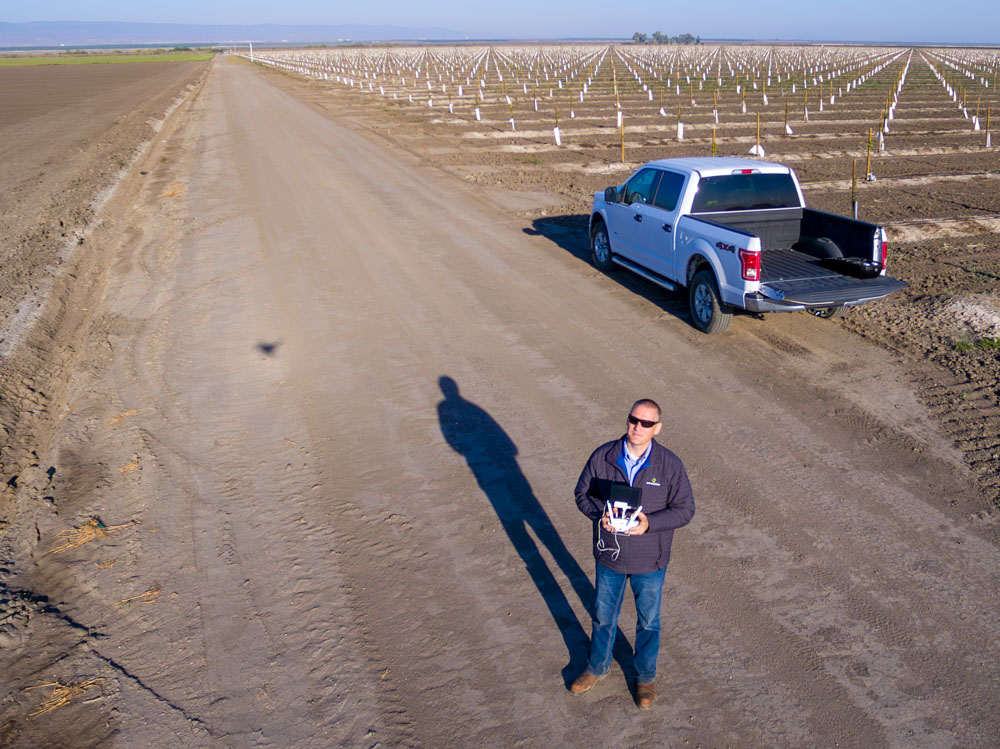Drones in agriculture are becoming more popular and practical every day. They can help farmers monitor crops, spray pesticides, IPM, collect data, and even pollinate plants. In this blog post, I will share some of the benefits and challenges of using drones in agriculture. Often you may hear drones referred to as UAV (Unmanned Aerial Vehicle).
Benefits of drone use in agriculture:
- Drones can cover large areas of land faster and more efficiently than humans or machines. They can also fly over difficult terrain and access hard-to-reach places.
- Drones can provide high-resolution images and videos of crops, soil, and weather conditions. They can also use sensors and cameras for crop scouting to detect pests, diseases, weeds, and nutrient deficiencies.
- Drones can help farmers optimize their inputs and outputs by providing precise information on crop health, yield, and quality. They can also help farmers reduce their environmental impact by minimizing irrigation water, fertilizer, and pesticide use.
- Drones can perform tasks that are otherwise dangerous or tedious for humans, such as spraying pesticides, seeding, and pollinating. They can also reduce labor costs and risks for farmers.
- If all you want is check your farm fields from birds-eye view, drone can be an inexpensive tool that you could add to your farm tools arsenal.
Challenges of drones in agriculture:
- In the benefits list above, I mentioned that a quality drone with a good camera, now days, is very affordable. Often you will need a drone with more than just a basic camera. You may need a drone with a special camera (i.e. infrared camera) or a drone that can lift a greater payload. In these cases, drones could require a lot of investment in terms of equipment, software, training, and maintenance.
- Drones are subject to regulations and restrictions that vary by country, state, and region. Farmers need to obtain licenses, permits, and insurance to fly drones legally and safely. Please refer to a list below to see what licenses / permits are required to use drones in agriculture.
- Drones can present risks to other aircraft, animals, and people if they malfunction or crash. They can also cause privacy and security issues if they capture sensitive data or images without consent.
- Drones are not a one-size-fits-all solution for every farm. Farmers need to consider their specific needs, goals, and resources before adopting drones on the farm.
License requirements to fly a drone (UAV) in agriculture in US:
First, I’ll start with a disclaimer here: rules for drone flying do change. Please check FAA website for the latest rules and regulations before you operate UAV.
FAA Part 107 Drone Pilot License
Anyone operating drone in agricultural needs to have an FAA Part 107 drone pilot license. This license certifies that you have the knowledge and skills required to fly a drone safely and legally in the US. To obtain a Part 107 license, you need to be at least 16 years old, pass an aeronautical knowledge test, and undergo a security screening by the Transportation Security Administration (TSA).
FAA Part 137 License
For crop spraying, in addition to the Part 107 license, you will also need the FAA Part 137 license. This license is the same as for crop dusters used for aerial applications. The Part 137 license ensures that you are aware of the safety and environmental considerations involved in spraying crops from the air.
Part 137 Exemption
If you’re using a drone that weighs over fifty-five pounds, you will also need to obtain a Part 137 Exemption. This exemption can be obtained through the FAA’s regulations.gov website.
Aerial Commercial Applicator License from your State
In addition to the FAA licenses, you may also need to obtain an aerial commercial applicator license from your state’s regulatory agency. You may also need to show that you have liability insurance and follow all relevant environmental regulations.
Remote ID
Beginning September 16, 2023, in addition to being certified, farmers need to have their drones registered with the FAA and must have “Remote ID.” Remote ID on the drones will broadcast the drone’s identification number.
I hope that the regulation requirements did not scare you away. Drones in agriculture are an exciting and innovative way to improve farming efficiency, productivity, and sustainability. If you are interested in trying out drones on your farm, please do your research. I strongly believe that the benefits of drone use in agriculture are much greater than the regulation burden required to get started. Productive and safe flying to you!
